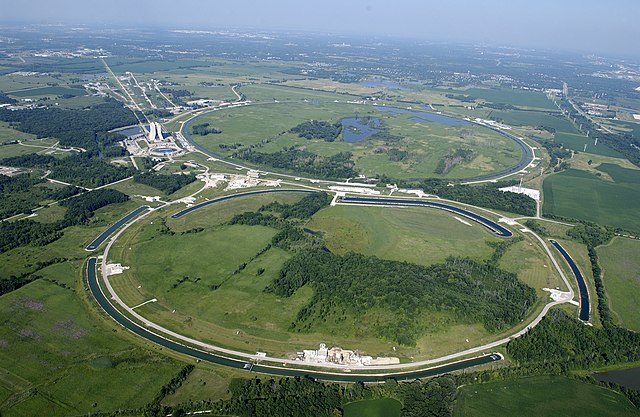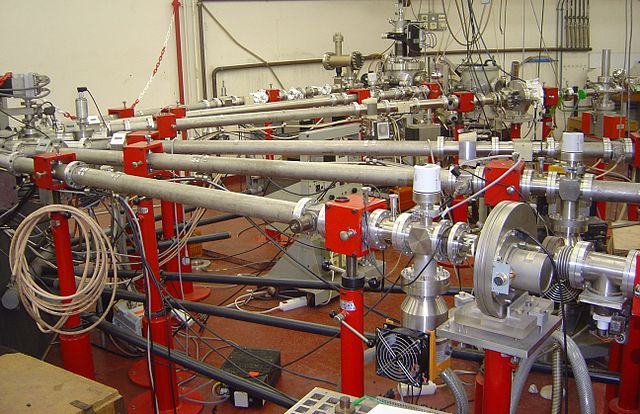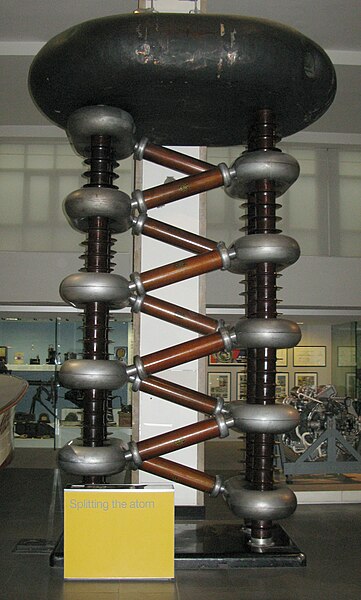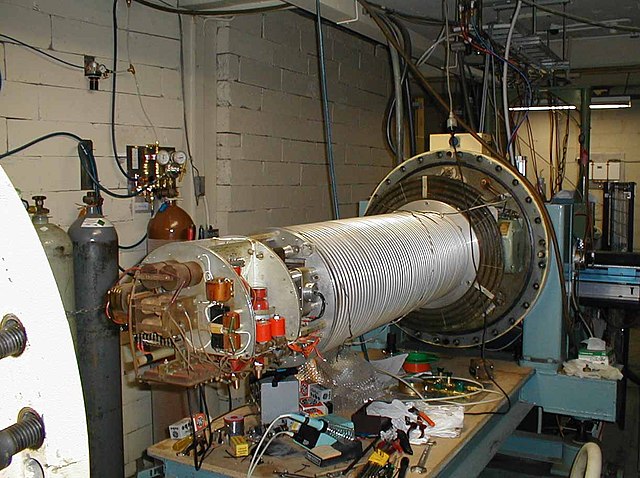Large Electron–Positron Collider
The Large Electron–Positron Collider (LEP) was one of the largest particle accelerators ever constructed. It was built at CERN, a multi-national centre for research in nuclear and particle physics near Geneva, Switzerland.
The former LEP tunnel at CERN being filled with magnets for the Large Hadron Collider.
A section of the LEP Particle beam tube
An old RF cavity from LEP, now on display at the Microcosm exhibit at CERN
A particle accelerator is a machine that uses electromagnetic fields to propel charged particles to very high speeds and energies, and to contain them in well-defined beams.
The Tevatron (background circle), a synchrotron collider type particle accelerator at Fermi National Accelerator Laboratory (Fermilab), Batavia, Illinois, USA. Shut down in 2011, until 2007 it was the most powerful particle accelerator in the world, accelerating protons to an energy of over 1 TeV (tera electron volts). Beams of protons and antiprotons, circulating in opposite directions in the rear ring, collided at two magnetically induced intersection points.
Beamlines leading from the Van de Graaff accelerator to various experiments, in the basement of the Jussieu Campus in Paris.
A Cockcroft–Walton generator (Philips, 1937), residing in Science Museum (London).
A 1960s single stage 2 MeV linear Van de Graaff accelerator, here opened for maintenance







